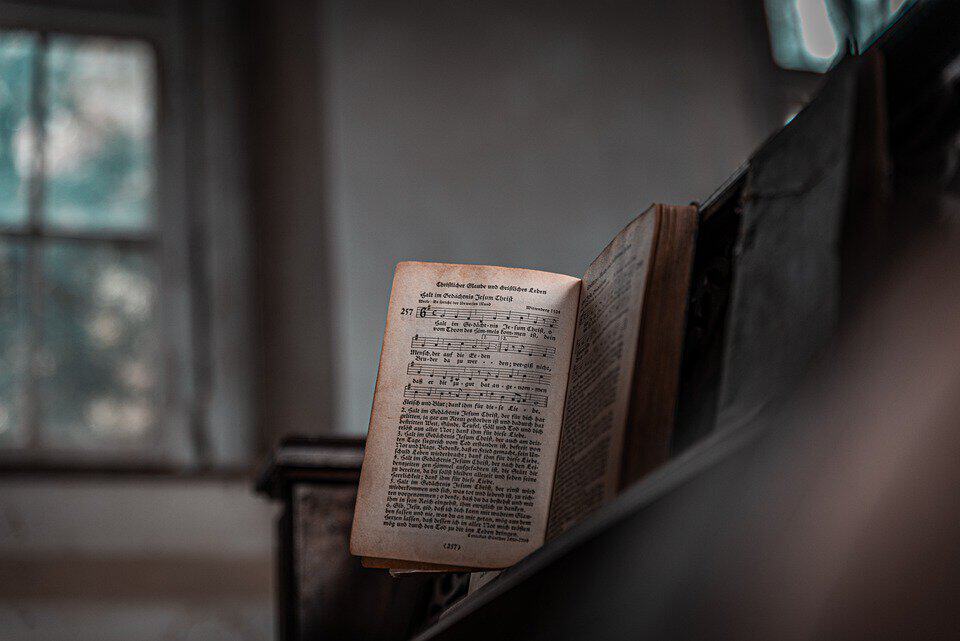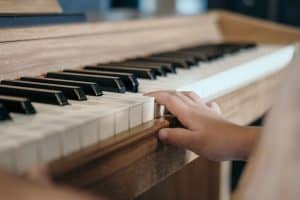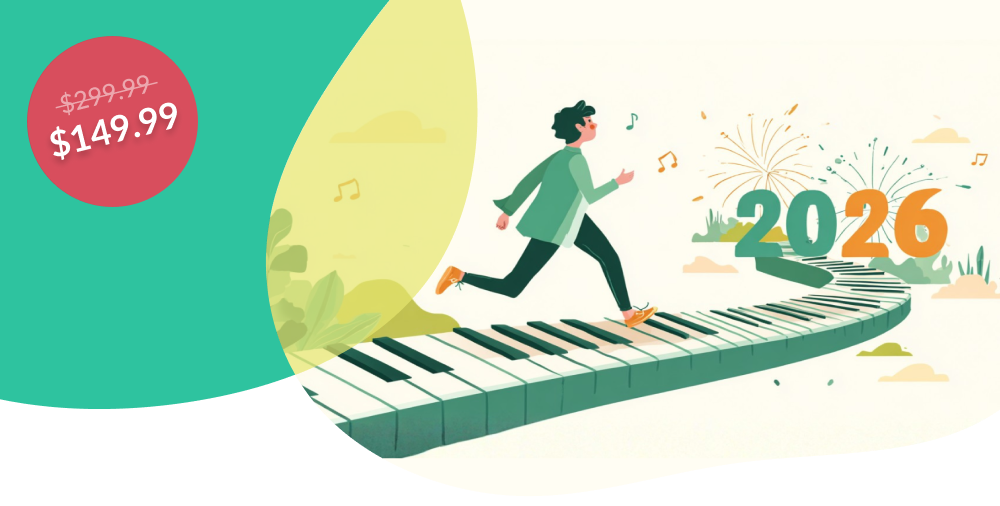Sight reading when a musician reads a piece of sheet music they have never seen before. This skill can feel challenging to learn. However, with consistent practice and effort it is possible to develop your skills and become a proficient sight reader. In this article, we will explore the basics of sight reading on the piano and provide some top tips and techniques to help you develop this useful skill.

What is sight reading?
Sight reading in music refers to the ability to read and perform a piece of music in real time, without any practice or preparation. Learning how to sight read is an essential skill for musicians, especially for those who perform frequently or work as session musicians. As you would imagine sight reading involves knowledge and proficiency in these key areas:
- Strong piano note reading skills
- Strong rhythm recognition
- Knowledge of music notation concepts such as key signature, tempo and dynamic markings etc.
- Proficiency in your instrument and good technique
- Audition skills
Why is sight reading important?
Learning sight reading for beginners is a valuable skill for several reasons:
- Efficiency – sight reading allows musicians to learn new pieces more efficiently. This is particularly useful for musicians who perform frequently.
- Improving musicianship – sight reading can help musicians to deepen their understanding of music, as it requires them to intuitively engage with musical notation.
- Building confidence – being able to sight read well can help to build a musician’s confidence. It can allow you to tackle new and unfamiliar music with greater ease and assurance.
- Professional opportunities – for anyone looking to make a career in music, sight reading is often an essential skill. Many professional musicians are required to sight read on a regular basis.
How to improve your sight reading
To begin with, it is important to understand that sight reading piano sheet music is not about playing the piece perfectly. Instead, it is about playing the piece solidly enough to convey the melody, rhythm in music and nature of the piece to the listener. As you improve you will get more accurate and proficient. Let’s take a look at our top sight reading tips:
- Take a moment to look at the time and key signatures to know what time signature and key you are in.
- Look at the phrases, structure of the piece and take note of any repeats or codas etc. This will give you an idea of what to expect and help you stay on track through the piece. It also allows you to plan fingerings and where to look on the score as you play.
- Follow the rhythm of the piece through before you start, noting any tricky passages that will require extra focus. Watch out for ties, passing notes and dotted notes. These concepts may require attention to execute well.
- When playing, try to anticipate what is coming next. As you play, keep your eyes ahead of where you currently are and try to look at the notes in advance.
- Be sure to practice your musical fundamentals such as piano scales, arpeggios, rhythm values and reading clefs etc.
Skoove’s piano course has lessons on sight reading, with valuable tips and tricks you can incorporate into your piano practice today. Practicing sight reading can be tricky but consistent effort can produce considerable results in a short time.
Sight reading exercises for beginners
Knowing how to practice sight reading without help can often be a daunting task. To improve your piano sight reading practice online regularly with Skoove and gradually increase the difficulty of the exercises as you become more comfortable. Here are some great step by step sight reading piano exercises to help you progress.
Exercise 1: Select a piece of sheet music you haven’t played before and give yourself a short while to examine notes before playing. Then, try playing the piece at a slow tempo, focusing on playing the correct rhythm and notes on the piano. Don’t worry about playing with dynamics too much articulation yet, just focus on the basics.
Give this a try with a simple tune:
Exercise 2: Continue with another simple piece of music with a repeating pattern like “Twinkle, Twinkle, Little Star”. Play the piece slowly and then try gradually increasing the tempo with each repetition as you get more comfortable. This will help you build up your sight reading speed.
Exercise 3: Practice playing scales in different keys, octaves and from different positions. This will help you become more comfortable with reading music in different positions on the piano and improve both your hand positioning and fingerings.
Exercise 4: Practice playing and reading chords in different octaves and in different inversions, just like you did with your scales. This will help you become more comfortable with reading harmony in different positions on the piano and improve confidence sight reading of chords.
Exercise 5: Find a piece with an interesting rhythm and work through it by either tapping, clapping or speaking it through. Be sure to keep a steady tempo be either tapping your foot or better still with a metronome.
All these exercises work on your sight reading through slow deliberate practice or isolating the elements of it out into manageable chunks. These methods are the best way to practice sight reading, enforcing positive and deliberate actions and reactions to written music. Focus on the exercises you found most difficult. This is the area of sight reading that needs your most attention and you should tailor your practice accordingly for the best results.
What’s next after sight reading?
With consistent sight reading practice, you will become more confident in your abilities and be able to play new pieces with ease. Be sure to make use of the Skoove app as it has lots of great options for song choices and feedback and exercises to help you along your sight reading journey. We hope you learned a lot from this article. Keep up the good work!
Author of this blog post

Eddie Bond is a multi-instrumentalist performer, composer, and music instructor currently based in Seattle, Washington USA. He has performed extensively in the US, Canada, Argentina, and China, released over 40 albums, and has over a decade experience working with music students of all ages and ability levels.















